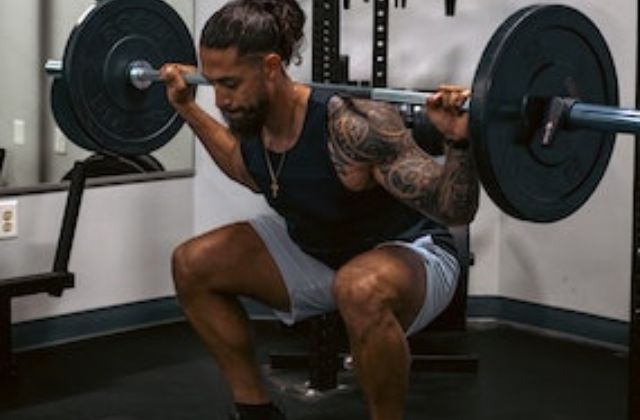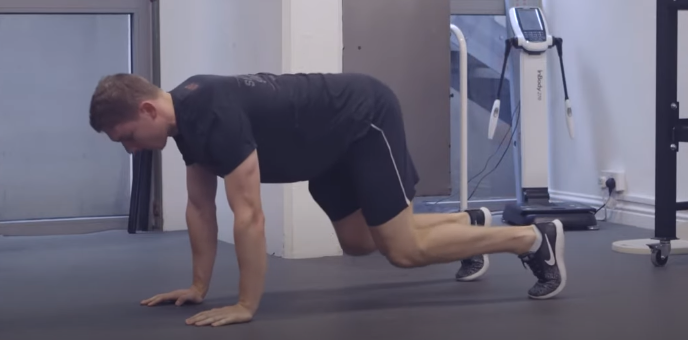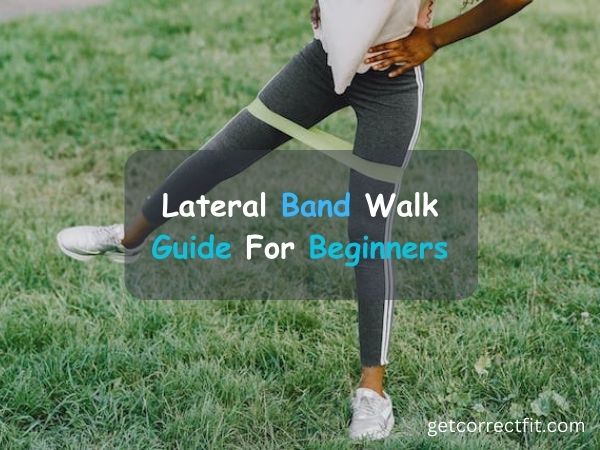There is nothing better than squatting when it comes to the muscles of the lower body, because squatting is an exercise that works every muscle and puts pressure on the joints as well and helps build muscle mass and muscle endurance.
Would you like to have a list of exercises that will be your companion on the way to build stronger leg muscles? There is no doubt that the barbell squat and its variants will work well for you. If you have a bar and some weights at home, you do not even need to go to the gym because you already have everything that is required. You will only need to start the application and do some exercises.
Therefore, in this post, we will learn about the most powerful variants of the barbell squat to target the thigh muscles, glutes, hamstrings, and even the calves. This post will be all you need to get started.
Let’s continue together!

Who can do barbell squats ?
The barbell squat can be done by anyone who has previous experience with lifting weights because it does not pose any danger to your health or the like, so the barbell squat can help anyone who aspires to build muscle mass or build the endurance of the lower body to achieve this goal.
It can also help even people who want to reduce fat and build muscle in the lower body.
Learn About The Muscle Activation During Barbell Squat Exercises
What are the best barbell squat variations
| Barbell Pause Squats | Back Squats |
| Tempo Squats | Bodybuilder Front Squats |
| Zombie Squats | Negative Squats |
| Front Squats | Zercher Squats |
| Bulgarian Split Squats | Shotguns Squats |
10 Barbell squats variations for max gain
The exercises contained in this list are provided by specialized trainers, and they are safe if you do them in the right way, of course, as they will help you make a big change on the level of your lower body muscles, as it will help you build endurance and strength that will help you even to do upper body exercises.
Let’s start with the first exercise:
1- Barbell Pause Squats
This is one of the best variants of the barbell squat, every time you go into the depth you do a slight pause and then come back to standing again, this is good for keeping the muscles tense throughout the exercise and it targets the muscles for a longer time compared to the rest of the variants.
How to do it correctly:
- First, define your fists, more than shoulder width apart.
- Insert your head under the bar, place the bar on the hind delts.
- Keeping your fists tight, turn your elbows to the sides to form wings.
- Keep your chest pushed forward, your back straight, and your feet looking straight forward.
- Then start squatting, and then pause the movement for a second or two each time you go down to the depth.
Pro tip:
Try to be slow and try to stop when your knees are at a 90-degree angle and keep squeezing your muscles with each repetition.
Also avoid some mistakes, such as turning the wrist back. Try to keep the weight at the base of the palm and keep your wrist steady and straight with the forearm.
Don’t let your hips drop excessively, and don’t arch your back.
2- Shotgun Squat
This exercise is not very different from the previous exercise because it works on almost the same idea, which is to keep the muscles tense so that he cheats the muscles with each repetition.
You do a half squat and then come back to standing again, this exercise is a good variant that adds several changes to the squat exercise and these changes have a positive effect on the muscles.
How to do it correctly:
Just like the previous exercise.
- First, define your fists, more than shoulder width apart.
- Insert your head under the bar, place the bar on the hind delts.
- Keeping your fists tight, turn your elbows to the sides to form wings.
- Keep your chest pushed forward, your back straight, and your feet looking straight forward.
- Start doing a squat, each time the thighs become parallel to the ground, do a half-standing and return to the squat again and then stand completely.
Pro tip:
Try to keep your muscles engaged throughout the exercise. The purpose of this is to not allow the muscles to rest during the exercise.
The more pressure you keep on them, the better. You will feel the thigh muscles tearing after a few repetitions and that will be a good thing.
Also avoid some mistakes, such as turning the wrist back. Try to keep the weight at the base of the palm and keep your wrist steady and straight with the forearm.
Don’t let your hips drop excessively, and don’t arch your back.
3- Zombie Squats
If you do not have the necessary fitness and some experience with carrying weights, try to avoid this exercise, as you build the necessary fitness with less intense exercises, so that the zombie squat exercise puts your muscles in front of stronger challenges and requires that the front delts are also strong, so that your arms are Straight forward, meaning that the weight is carried over the shoulder muscles and must remain consistent.
How to do it correctly:
- Adjust the bar at a medium height so that it is easy for you to lift it up.
- Stand in front of the bar, place your hands under the bar straight forward.
- Put the bar on the front deltoids, hold the bar in that position and try to be balanced so that the bar is not tilted to one side.
- Stand straight with your feet about shoulder width apart.
- Starting a squat, let your knees go to the side each time you go deep, also extend your hips down more.
Pro tip:
Keep your arms as steady as possible, if you can’t do it with a stick or bar without weights until you get used to it, also you should extend your hips down so your knees are directed to the sides in order to allow the hips to go down more.
4- Barbell Front Squat
Front squat, I think you heard this name before because it is one of the most popular barbell squat exercises for bodybuilders and in fitness rooms in general, so this makes it very effective in targeting muscles, stimulating and activating them and helping to increase size and strength as well.
How to do it correctly:
- Stand in front of the bar, preferably at chest height.
- Place the bar on the area between the front and middle deltoids.
- Turn your elbows forward and hold the bar with your fingertips just for support.
- Stand straight, feet shoulder width apart.
- Work your core well, then start squatting and extend your hips down well (knees go out).
Pro tip:
You are supposed to put the weight on the front deltoids, your fingers are just a support to control the path of the bar and its balance when you try to put the bar on the front deltoids and help with your hands, try to do a few repetitions, and extend the hips down well let the knees go out a little.
5- Negative Squat
Negative squats are also an innovative exercise that causes muscle failure if you go with heavy weights. It is one of the exercises that has the ability to build thigh muscles very effectively and build tremendous endurance. You can rely on negative squats well because it will improve your performance a lot.
How to do it correctly:
- First, define your fists, more than shoulder width apart.
- Insert your head under the bar, place the bar on the hind delts.
- Keeping your fists tight, turn your elbows to the sides to form wings.
- Then start squatting slowly as you go to the depth, trying to feel your muscles well.
- You can also count to 5 each time you go deeper, and count to 2 or 3 while standing.
Pro tip:
Try to be as slow as possible, because the slower you are, the more effective the exercise and focus on working your muscles and feeling their tension with each repetition. This exercise will help you improve your performance with squats loaded with heavier weights. Well.
6- Tempo Squats
Also, this is another unique variable. It works your muscles 100% and keeps them under pressure as much as possible, so that there is no complete contraction of the quadriceps muscles throughout the exercise, your movement is between squatting and half standing, and this is what makes the thigh muscles and hamstrings and Glutes are also under stress.
How to do it correctly:
- First, make your fist, about shoulder width apart.
- Insert your head under the bar, place the bar on the back delts.
- Keeping your fists clenched, turn your elbows out to the sides to form wings.
- Then start squatting to the rear, but do not stand up completely, keep repetitions between squats and semi-stands.
Pro tip:
Try to maintain your speed, do not slow down too much and at the same time do not speed up, also focus on your muscles well and try to communicate with them and feel them and keep them tense until the end of the exercise.
7- Overhead Squat
This is another variable and I think everyone knows it, it is also an exercise that keeps your muscles alert and makes you focus on your muscles more and keep them under stress throughout the exercise. It is like any barbell squat exercise, but this exercise imposes some challenge on you and more caution so that the weight is above your head. This is more challenging when you return from the depth to the straight stand.
How to do it correctly:
- Choose a weight that you can handle and that matches your fitness level.
- Try to make your fists well wide, so that your hands are shaped like the letter V when the bar is pressed up.
- Stand straight, feet shoulder width apart.
- Press the bar straight up.
- Start doing squats and try to go deep well without bending your hands, also keep your knees out so that the hip drops well.
Pro tip:
Try to press the bar directly above your head and tighten your fists on it and never bend your hands, try to stay alert and keep your muscles under pressure throughout the exercise, also keep the upper part of the body neutral and focus only on extending and contracting the muscles of the lower part of the body.
8- Zercher Squat
This is also another exercise that does not target the muscles of the lower part of the body, but even the upper muscles because it integrates multiple muscles secondary and you will feel their tension when you do this exercise, and it isolates every muscle in the lower part of the body and works to strengthen and build it well.
How to do it correctly:
- Hold the bar on the flexion position, above the inside of your elbows (as if you were holding a small child).
- Stand straight, back straight and chest forward.
- Open your feet shoulder width apart.
- Then start squatting and extend the hips down well.
- Keep your knees out with each repetition to make it easier for you to extend your hips and get up smoothly.
9- Barbell Split Squat
This is also one of the most powerful variants that targets the muscles of the feet. It is effective in stretching the quadriceps and hamstring muscles on a larger scale. It is an effective exercise to increase muscle mass, size and endurance. And It is one of the exercises that you can rely on, in fact it may excel On the regular squat because it keeps the muscles of the upper part of the body neutral and focuses 100% on the lower body.
How to do it correctly:
How to do it correctly:
- Choose a bar with a weight that matches your fitness level.
- Stand straight and bench behind you.
- Place the bar over the back deltoids, with your fists more than shoulder width apart and keeping your elbows straight out to the sides.
- Step away from the bench.
- Place the front of the foot on the bench, keeping your other foot straight with your chest muscles.
- Press your foot on the ground and squat as far as you can reach.
Pro tip:
Keep your back straight and tilted forward throughout the exercise, also your arms straight down, you may want to put in a greater challenge by doing a full squat and then followed by a half squat (that is, you do not rise completely so that you stand in half of the movement and squat again).
RFE Split Squat Guide For Massive Quadriceps
10- Sissy Squat With Barbell
You can do the sissy squat with the machine or just by using your body weight, both of them work in the same way, but the machine may help you stretch the thigh muscles to the maximum extent, so we will focus on explaining how to do the sissy squat with the machine, and we will explain how to do it with your bodyweight only.
There are many machines that work differently, but they all support your feet and keep you steady.
- First, place the bar on your rear delts, and hold it well with your fists.
- Fix your feet on a sissy squat machine, stand up straight and make sure the surface of your feet rests well under the pillow.
- Keeping your feet facing forward, support the calves with the inclined pillow.
- Let your hips fall back to a good depth.
- On your way to squatting, keep your back straight and lean forward slightly so that it is almost parallel to your knees.
- Extend the thigh muscles and push the hip back well, but do not fall too much. Stop when the knees are at a 90-degree angle.
Pro tip:
- You must work with these tips because they will make you benefit from the exercise well. First, you must squeeze your muscles before you squat. When you are standing with your feet supported by the pillow, it should not be as if you are going to squat.
- Focus on going backwards like a stick, i.e. try to bend your knees until after you put your thigh muscles and glutes under tension, so focus on letting your body fall back straight (but not excessively), then start bending your knees little by little and extend your hips back well.
- Sissy squat is not as easy as its name, so please don’t underestimate this exercise as it is a killer for the quadriceps that you will feel tearing with every centimeter you add in the squat.
Sissy Squat Guide For Max Gain
What are the muscles worked by barbell squatting?
Perhaps some exercises target some muscles and put more pressure on them more than other muscles, there are exercises that primarily target the quadriceps muscles, such as the Sissy squat.
But relying on these variables for the barbell squat in a combined way, will ensure that you target each of: the buttock muscles (Glutes), the Adductors, Hamstrings, Quadriceps, and Calves.
How often should I do barbell squats?
Squat exercises are a form of compound exercises that occupy several joints and target several muscles in the same exercise, so you tire the muscles with these exercises and benefit more because you target a group of muscles at the same time.
Well, you might be training your lower body twice a week, during your leg training sessions do some warm up and go straight to doing one of the variables mentioned here, do a few sets and focus on stretching your muscles well, then move on to doing some isolation exercises If you want to target some muscle in particular.
When you do a strength exercise like the barbell squat, make sure you do everything you can with it, then allow your muscles to recover at least 48 hours before targeting them with another compound exercise.
Barbell squat training program
- Beginners : 2 – 3 Sets / 6 – 8 Reps / 60 Sec rest
- Intermediate : 3 – 4 Sets / 8 – 12 Reps / 60 Sec rest
- Advanced : 4 – 5 Sets / 12 – 15 Reps / 60 Sec rest
Should I go heavy with barbell squats?
If you are a beginner, this is not recommended at all, especially with squatting exercises, because the injury rate is significantly high, and it can have a negative effect on your muscles, so try to go with lighter weights at first and do a few repetitions.
If you want to achieve muscle hypertrophy, this is another thing because you have to be more careful, as there are some athletes who deal with weights that constitute up to 75% of their body weight and go with fewer repetitions and this is very effective.
So you can go with resistance weights that cause muscle failure after the sixth to 8 repetitions, if you are targeting 10 – 12 repetitions.
Avoid This 15 Muscle Building Mistakes Now
Barbell squat mistakes
Not making mistakes is something impossible, we can’t go on with our lives without making mistakes and it’s not a shame to make mistakes because you learn right things by making mistakes, don’t be like those people who throw in the towel when they don’t get results.
Mistakes may prevent you from getting good results, and it may be worse, you may get injured and this is something we do not want to happen all, so here are some mistakes that you should avoid while doing barbell squats.
1- Hip Structure
You must take care with the movement of the hips well, you may feel some pain in your joints and cannot go to a certain depth, this may happen due to the position of your feet because there are those who cannot squat if their toes are looking straight ahead while they can squat and Toes pointed sideways.
So focus on the position of your feet, and go with whatever position you feel comfortable with. The important thing is to master the movement.
2- Butt Wink
Also, this is a mistake that many make. This mistake may cause you some pain in the lower back and you will not like it. This mistake occurs due to letting the hip fall down during squatting, and thus the hip does not become straight with the knee, and this generates some arching in Lower back and hip area.
In order to get rid of this mistake, the thigh muscles must remain parallel to the ground when squatting, and keep your back straight, and if you want to extend the hips down well, you must space your feet well and keep the toes out so that you can keep your back straight.
3- Incorrect Path
This is also a mistake that cannot be avoided, especially if you are a beginner, which is the path of the bar from the top to the bottom or vice versa because the path of the bar is also related to the quality of the exercise. If the bar falls vertically down and rises vertically again without deviating from its path, this is a good indication, but if its path is obstructed forward or excessively backward, this may cause you to lose your balance.
So focus on leaving the bar exactly in the middle, that is, it is directly above the pelvis, so if you are doing a back squat, focus on keeping the bar in a straight path with the pelvis and at the same time when squatting, the bar should be straight with your feet because the pelvis goes back but Your feet are your balance point.
4- Going With Heavy Weights
This is also a common mistake with all exercises so that many beginners can not avoid playing the role of champions and avoid going with heavy weights, you must first be able and have the necessary fitness to do this because you will be injured and will stress a lot on your muscles.
You should go first with only a wooden stick, then go to the bar without weights weighing 10 kilos, then add weights automatically and you will discover that you are building a great fitness and at the same time the necessary experience.
What are the benefits of barbell squats?
- Helps build muscle strength.
- Increases the density of the bones.
- Burns calories and helps build lean muscle mass.
- Improve performance with some other exercises such as the deadlift or the clean and Jerk.
- Reduce the possibility of injury to the knee or ankle.
- increases muscle size evenly.
- Target many muscles at once.
Useful links
These links may be useful to you if you are a fan of building fitness and strength or gaining muscle at home, these links contain the most powerful CrossFit exercises that you can rely on mainly.
If you are a fan of bodyweight workouts, you can rely on these workouts at home, believe me, you may not need anyone to build strong fitness only at home.
Raise your cardio with 50 bodyweight exercise
Target your calves with the best jump ropes exercises
Triceps exercises without equipment
Also, if you want to focus on the muscles of the lower body, you may find these links very useful, you can rely on them to learn the correct movements and ways to build muscle.
Rear elevated squat guide for achieving the max gain
The most effectives exercises for calves
Learn how to build powerful thigh with kneeling squat
The best compound exercises for lower body (if want to gain muscle mass)



